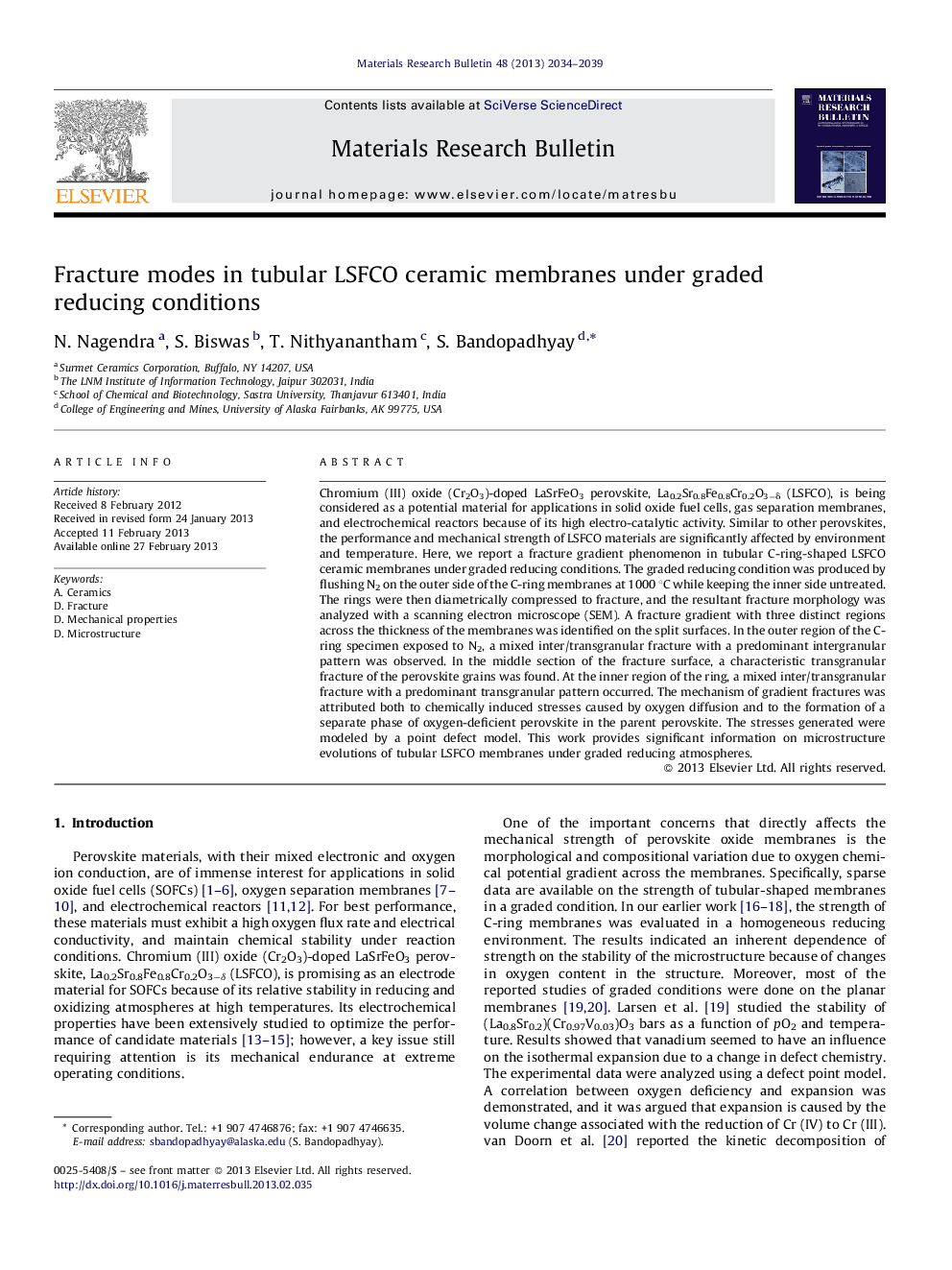| Article ID | Journal | Published Year | Pages | File Type |
|---|---|---|---|---|
| 1488679 | Materials Research Bulletin | 2013 | 6 Pages |
Chromium (III) oxide (Cr2O3)-doped LaSrFeO3 perovskite, La0.2Sr0.8Fe0.8Cr0.2O3−δ (LSFCO), is being considered as a potential material for applications in solid oxide fuel cells, gas separation membranes, and electrochemical reactors because of its high electro-catalytic activity. Similar to other perovskites, the performance and mechanical strength of LSFCO materials are significantly affected by environment and temperature. Here, we report a fracture gradient phenomenon in tubular C-ring-shaped LSFCO ceramic membranes under graded reducing conditions. The graded reducing condition was produced by flushing N2 on the outer side of the C-ring membranes at 1000 °C while keeping the inner side untreated. The rings were then diametrically compressed to fracture, and the resultant fracture morphology was analyzed with a scanning electron microscope (SEM). A fracture gradient with three distinct regions across the thickness of the membranes was identified on the split surfaces. In the outer region of the C-ring specimen exposed to N2, a mixed inter/transgranular fracture with a predominant intergranular pattern was observed. In the middle section of the fracture surface, a characteristic transgranular fracture of the perovskite grains was found. At the inner region of the ring, a mixed inter/transgranular fracture with a predominant transgranular pattern occurred. The mechanism of gradient fractures was attributed both to chemically induced stresses caused by oxygen diffusion and to the formation of a separate phase of oxygen-deficient perovskite in the parent perovskite. The stresses generated were modeled by a point defect model. This work provides significant information on microstructure evolutions of tubular LSFCO membranes under graded reducing atmospheres.
Graphical abstractFigure optionsDownload full-size imageDownload as PowerPoint slideHighlights► Microstructural evolution in LSFCO membranes under graded environment is reported. ► The role of chemically induced stresses and oxygen deficiency is evaluated. ► The stress distribution is modeled by a point defect model.
